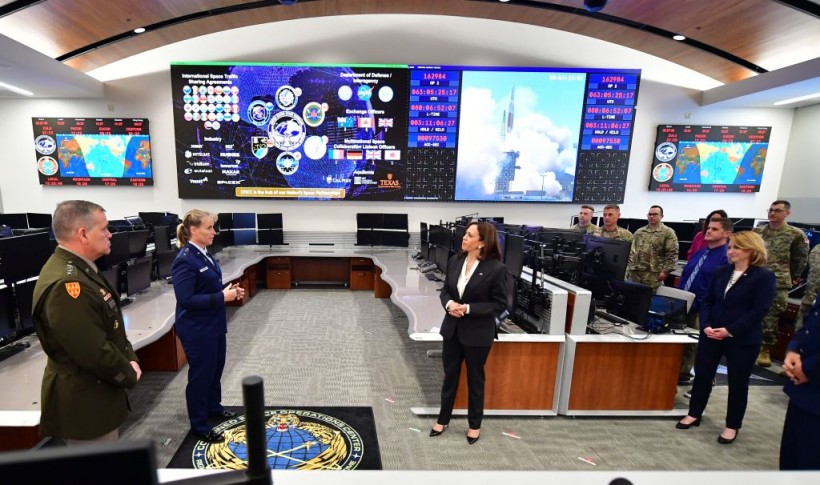US Space Force has hit a "strategic pause" on AI due to the relative risks it brings to the government body's data and services, said US Space Force, Tanya Downsworth to Reuters.
According to the report, the Spokesperson confirmed a memo stating the deliberate halt on the usage of large language models and generative AI in the government body. It is reported to be a choice needed to determine the appropriate course of action for integrating these capabilities into the personnel's responsibilities and the USSF mission.

(Photo : by FREDERIC J. BROWN/AFP via Getty Images)
US Vice President Kamala Harris meets with officer during a visit to the command space center at Vandenberg space force Base in Lompoc, California on April 18, 2022.
Artificial Intelligence and its use has been banned from the Space Force's workforce or 'Guardians' without formal approval on different government computers throughout the Space Force, dated September 29.
However, AI's ban on the US Space Force was clarified by the spokesperson as temporary and a protective measure to the institution's data and services.
AI's Advantages for the Space Force
Despite the ongoing ban, the same report stated that the US Space Force's chief technology and innovation officer, Lisa Costa, continued to see the merits of the booming technology by stating that it will surely transform our staff and improve their capacity for rapid operation.
In 2022, Costa also made numerous positive notions regarding the use of AI in the USSF, according to Forbes. The senior official said the USSF was finding different ways to adopt Artificial Intelligence.
The move was said to maintain the military's competitive advantages and create a force suitable for the modern era, anticipating that AI capabilities would benefit a wide range of Space Force activities, similar to electricity or computers.
Looking forward, the US Space Force will release further updates regarding the ongoing ban with an AI task committee to discuss responsible and strategic uses of the technology with other Pentagon offices at its forefront.
Read Also: CIA to Launch ChatGPT-Like AI Tool to Streamline Analyst Research, Remains Cautious
US Space Force and the Pentagon
Pentagon, last August, announced their generative AI task force headed by Craig Martell, the Defense Department's chief digital officer. The task force 'Lima' was created to navigate the reluctant Pentagon through the challenges and benefits of Artificial Intelligence.
The main purpose of the task force remained to be finalized. Still, one of its main objectives was a set of internal use cases for the department where generative AI may assist with the institution's work and where the risks and challenges of generative AI can be reduced.
In addition to AI use guidelines, the Pentagon's task force is also meant to strategize on possible procurement of different equipment to increase the department's AI capabilities, such as cloud services, data or synthetic data, and models.
The task force's head remained to clarify that there are more questions than answers the group will face, being open to the volume of work needed to understand the emergence of AI.
Recent concerns from different US government agencies continue to increase, with the USSF joining numerous others. Tech Times recently reported how the National Security Agency announced its AI Security Center.
Back in September, Reuters also reported that the United States Federal Trade Commission, the Department of Justice, the Consumer Financial Protection Bureau, and the Equal Employment Opportunity Commission, announced their concerns and capabilities to regulate AI, assuring fairness, equality, and justice within these systems.
Related Article: Space Guardians: US Space Force Will Use 'Robot Dogs' To Patrol Cape Canaveral










